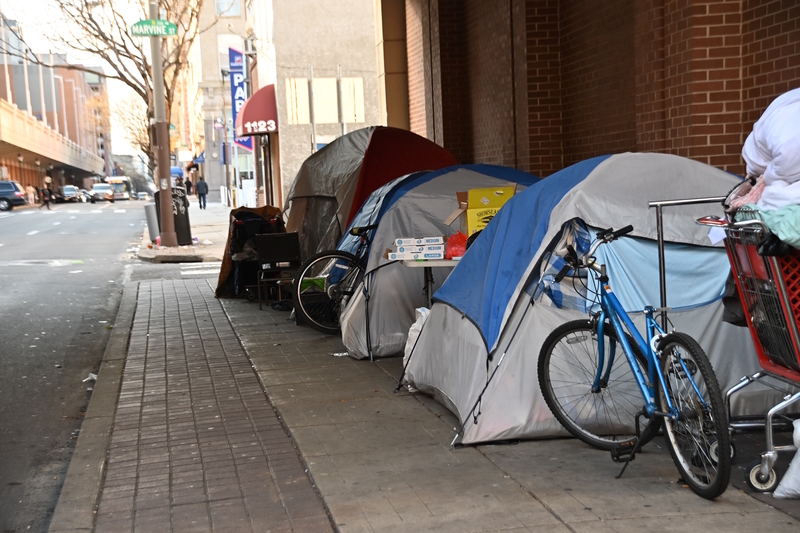NEW YORK, NY — If you think you’re seeing more homeless people on the streets of New York City and Philadelphia, you’re not imagining things. There is also a growing trend of expanding homeless camps in rural areas of New York, New Jersey, and Philadelphia.
Homelessness is on the rise in America, and it’s visible in many parts of the tri-state area.
Federal officials reported on Friday a significant 12% rise in homelessness across the United States, reaching its highest level since the inception of the annual point-in-time survey in 2007. The increase is attributed to escalating rents and the reduction of pandemic-era assistance, making housing less accessible for many Americans.
Approximately 653,000 people were counted as homeless in the January survey, an increase of about 70,650 from the previous year. Notably, the surge is largely driven by those experiencing homelessness for the first time.
The data marks the end of a declining trend in family homelessness that began in 2012. This increase has brought renewed attention to the challenges faced by homeless children, especially during the pandemic when many schools struggled to maintain contact with these families.
Efforts to address housing shortages are underway. Oregon, for instance, passed a $200 million housing package earlier this year. Additionally, nonprofit organizations are actively working to provide housing solutions, particularly for homeless veterans.
Ann Oliva, CEO of the National Alliance to End Homelessness, commented on the rising numbers, emphasizing the urgency of the situation for frontline workers. Housing and Urban Development Secretary Marcia Fudge highlighted the critical need for effective strategies to both prevent and rapidly resolve homelessness.
Historically, the U.S. saw a decline in homelessness from about 637,000 in 2010 to around 554,000 in 2017, thanks to focused efforts, especially in veteran housing. However, the number increased to approximately 580,000 in 2020 and remained stable over the next two years, aided by emergency rental assistance and other pandemic-related government interventions.
